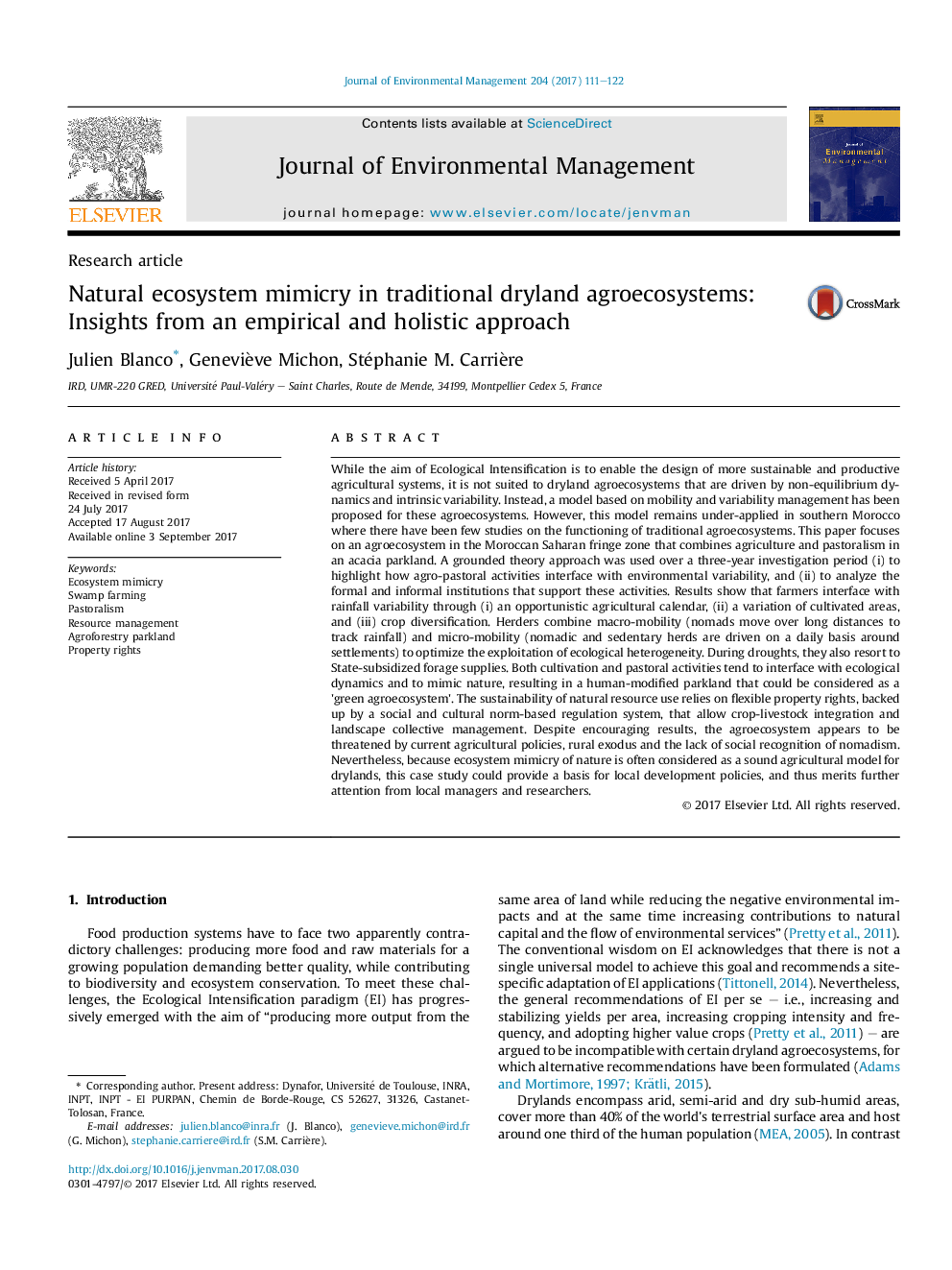| کد مقاله | کد نشریه | سال انتشار | مقاله انگلیسی | نسخه تمام متن |
|---|---|---|---|---|
| 5116248 | 1378093 | 2017 | 12 صفحه PDF | دانلود رایگان |
- We studied a Saharan traditional agroecosystem using a holistic approach.
- Cultivation and pastoral activities interfaced with variability and heterogeneity.
- Traditional activities led to a sustainable agroforestry parkland mimicking nature.
- Formal and informal rules and norms contributed to sustainable resource management.
- This promising agroecosystem is threatened by current policies and rural exodus.
While the aim of Ecological Intensification is to enable the design of more sustainable and productive agricultural systems, it is not suited to dryland agroecosystems that are driven by non-equilibrium dynamics and intrinsic variability. Instead, a model based on mobility and variability management has been proposed for these agroecosystems. However, this model remains under-applied in southern Morocco where there have been few studies on the functioning of traditional agroecosystems. This paper focuses on an agroecosystem in the Moroccan Saharan fringe zone that combines agriculture and pastoralism in an acacia parkland. A grounded theory approach was used over a three-year investigation period (i) to highlight how agro-pastoral activities interface with environmental variability, and (ii) to analyze the formal and informal institutions that support these activities. Results show that farmers interface with rainfall variability through (i) an opportunistic agricultural calendar, (ii) a variation of cultivated areas, and (iii) crop diversification. Herders combine macro-mobility (nomads move over long distances to track rainfall) and micro-mobility (nomadic and sedentary herds are driven on a daily basis around settlements) to optimize the exploitation of ecological heterogeneity. During droughts, they also resort to State-subsidized forage supplies. Both cultivation and pastoral activities tend to interface with ecological dynamics and to mimic nature, resulting in a human-modified parkland that could be considered as a 'green agroecosystem'. The sustainability of natural resource use relies on flexible property rights, backed up by a social and cultural norm-based regulation system, that allow crop-livestock integration and landscape collective management. Despite encouraging results, the agroecosystem appears to be threatened by current agricultural policies, rural exodus and the lack of social recognition of nomadism. Nevertheless, because ecosystem mimicry of nature is often considered as a sound agricultural model for drylands, this case study could provide a basis for local development policies, and thus merits further attention from local managers and researchers.
Journal: Journal of Environmental Management - Volume 204, Part 1, 15 December 2017, Pages 111-122
